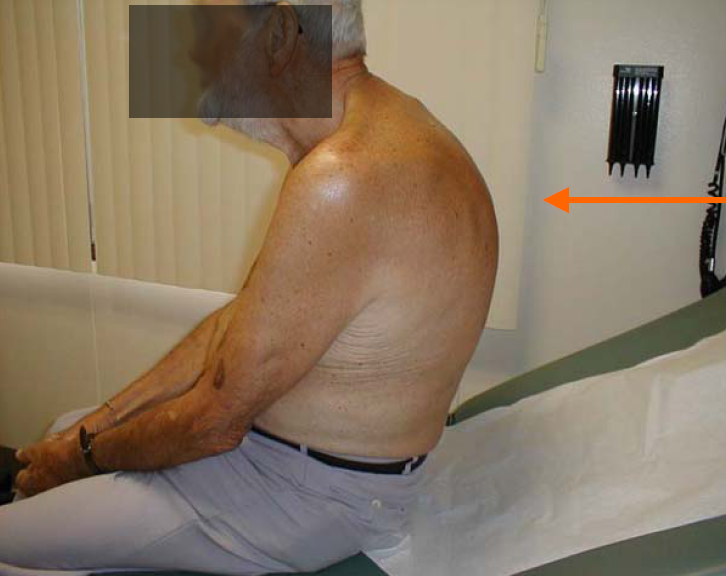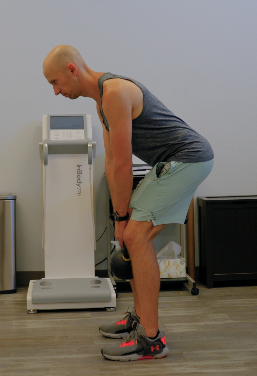Table of Contents
The real reason your neck hurts
If your neck ever hurts when…
– You exercise
– Work on the computer for too long
– Taking deep breaths
THIS POST is for you!
Because the reason why your neck hurts is NOT that you have to stretch it.
No.
Instead, it could be because of one thing you are doing all throughout the day.
The best part? This thing is TOTALLY under your control!
What is it? Read the blog and watch the video below to learn about it!
Why stretching your neck may not work
Neck mobility is restricted when neck musculature has increased resting tension. Neck muscles produce a concentric (shortening) contraction, reducing available motion and space.
Why doesn’t stretching work?

It comes down to tug of war.
Stretching also produces lengthening tension in the opposing direction.
Guess what happens when a tension force is applied to shortening muscles? What do those muscles do to counteract that force?
CONTRACT HARDER. #newtonslawbaby

Although pain can improve by increased stretch tolerance, little happens for neck mobility.
Instead, we have to sneak attack reducing resting neck tension.
How do we do that?
Breathing and neck pain
Neck muscles also act as accessory breathing muscles under stressful conditions. Stress here is considered any force acting on you. That entails life stress, exercise, gravity, etc.
What if your body makes adjustments for these stressors by upping neck activity? To help you breathe more efficiently?
Think about this. You breathe roughly 22,000 times per day. That’s a lot of reps your neck may be getting.
In fact, this systematic review showed that patients with chronic neck pain have:
– Altered breathing volumes
– Respiratory muscle deficits
– Altered breathing patterns.

These issues are associated with restrictive breathing issues. Meaning, altered ribcage dynamics influence airflow.
If we can improve mobility related to breathing, we could improve neck pain. This review seems to suggest this to be true.
A recent randomized controlled trial also showed improved neck pain with breathing re-education. Yet, the effects were not clinically meaningful. As a critique, breathing was coached in a manner that was TOTALLY SUS.
So how can we use breathing to influence neck pain? We have to look at how to drive better respiratory mechanics.
There are three pieces:
Improving these areas can improve chest wall compliance and breathing function and volume.
Let’s dive into each.
Neck position to relieve neck pain
Neck muscle activity during breathing reduces airway dimensions, expediting airflow into the lungs.
This phenomenon works like blood pressure. Blood vessels constrict to shoot blood faster to the desired tissues. Here, the airway constricts to shoot air into the lungs faster. But it comes at a cost.
The cost?–Increased neck muscle activity.
To counteract this, we have to choose a head position during exercise that:
- Increases airway dimensions
- Minimizes increased neck muscle activity
What position is that?
Slight upper cervical (head) extension

This position opens the airway, reducing accessory muscle activity. It’s a similar position to the one used during CPR.
How do we cue this during exercise?
Through the eyes.
This study shows a weak correlation between visual issues (i.e. reduced convergence/focus) and neck posture. Basically, the neck may make adjustments to ease the workload of the visual system.
While vision training goes beyond the scope of this post, we can still use the info to our advantage.
KEY – We may be able to alter neck tension by differentiating eye and head movements. Subtle eye movements may lead to subtle changes in neck position.
How to cue this action?
Glance with eyes
Where you look will depend on the action at hand. Here’s my checklist on how to determine where to look:
- Standing – Eyes to horizon
- Changing body levels (squat, hinge, etc) – Eyes to horizon at start, then 5-7 ft (1.5-2m) out in front of you
- Face down – 1-2 ft (30-60cm) ahead
Now that’s during exercise? But how would this work when we are doing things like working at a computer or reading?
The same concept could apply. Think gazing with your eyes at the screen/book, not using your neck to read.
If still have issues, it’s worthwhile to get evaluated by a behavioral optometrist.

THAT SAID.
You can’t expect to sit for several hours without consequence. We must move! So the best long-term solution here is to get up and take frequent breaks.
Breathing to relieve neck pain
With submaximal exercise (i.e. not heavy lifts), use a breathing strategy that promotes:
– Adequate ribcage mobility
– Reduced neck activity
Here’s how I coach that:
- Quietly in through the nose
- Soft and slow exhale through the mouth
People who often feel their necks when they breathe often do so because they use TOO MUCH FORCE.
Common issues I see:
- Inhaling loudly
- Inhaling through the mouth
- Exhaling too forcefully
- Exhaling all the air out
Any of these can contribute to increased neck activity.
Now I inevitably get asked, “is this how I should breathe ALL THE TIME?!?!”
No
This strategy is used to increase ribcage motion and reduce neck activity.
During daily life when you aren’t talking to someone, I would focus on the following:
- Lips closed
- Quietly breathe in and out through the nose
Differentiating arm and neck movements
This study demonstrated that arm elevation reduces the breathing activity of upper body muscles.
But here’s the problem: many cannot reach their arms without increasing neck activity.
If you feel your neck working when you are doing upper body exercises, you are likely doing one of the following:
- Orienting the thorax (crunching, arching, or forcefully rotating)
- Changing head position during the reach
- Poorly pacing reaching with breathing
Fix these issues by focusing on the following:
- Keep chest parallel to the surface it’s facing
- Keep head positions per above
- Pacing reaching and exhaling together (body only moves as you are exhaling and at the same pace)
Sum up
Differentiating your neck from these actions will do wonders to reduce neck tension.
To recap:
- Neck stretches don’t work because of Newton’s law. The equal and opposite force is the neck muscles contracting
- Breathing reduces by limiting accessory breathing
- Differentiate eyes from neck to open airway
- Keep your breathing chill
- Reach independently of neck
What parts of this post were most difficult for you to create? Comment below and let us know.
